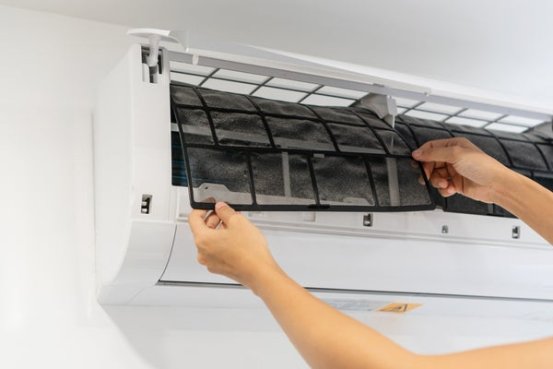

A reliable HVAC system is essential for maintaining comfort throughout the year, but without regular checkups, minor problems can escalate into costly repairs. An HVAC inspection ensures that your heating and cooling system is operating safely, efficiently, and consistently.
A reliable HVAC system is essential for maintaining comfort throughout the year, but without regular checkups, minor problems can escalate into costly repairs. An HVAC inspection ensures that your heating and cooling system is operating safely, efficiently, and consistently.

From evaluating filters to testing essential parts, a professional inspection helps extend equipment lifespan, lower utility bills, and reduce the chance of sudden breakdowns.
An HVAC inspection is a comprehensive review of your system, covering components such as the furnace, air conditioner, heat pump, ductwork, and thermostats. Technicians look for issues like leaks, worn parts, electrical faults, and reduced efficiency. These inspections are often recommended before high-demand seasons like summer and winter.
Typical inspection tasks include:
Measuring refrigerant levels and checking airflow
Cleaning or changing air filters
Testing thermostat accuracy and calibration
Inspecting and tightening electrical connections
Examining ducts for leaks or blockages
The exact process can vary depending on the provider and system, but the overall goal is the same: detecting potential problems early to prevent breakdowns and unexpected repair costs.
Although HVAC systems are designed for durability, regular use can cause wear that leads to inefficiencies if left unaddressed. Routine inspections offer several benefits, including:
Longer Equipment Life: Addressing small issues before they worsen can add years to your system’s lifespan.
Improved Efficiency: A system that runs at peak performance uses less energy, lowering utility costs.
Cleaner Air: Inspections often include filter checks, which can improve indoor air quality by reducing allergens and dust.
Fewer Emergencies: Proactive maintenance lowers the chance of system failure during extreme heat or cold.
It is worth remembering that inspections cannot guarantee a trouble-free system. New issues may still arise, making consistent maintenance an important practice.
The cost of an HVAC inspection depends on system size, service location, and the scope of the evaluation. Most homeowners pay between $65 and $500, with standard inspections averaging closer to $100–$300. More complex systems or services that include deep cleaning or repairs may cost more.
Key factors influencing price include:
System Complexity: Multi-zone or advanced setups often require longer inspections.
Provider Expertise: Established companies may charge higher rates but typically deliver more detailed evaluations.
Seasonal Demand: Prices often increase in spring and fall as homeowners prepare for seasonal changes.
Additional Repairs: Any repairs discovered during the inspection are billed separately.
Some companies also offer maintenance contracts that combine multiple inspections per year with discounted repair services, which can be more economical for older systems.
The best time to schedule an inspection is before the start of the cooling or heating season—spring for air conditioning and fall for heating systems. This ensures your equipment is ready for heavy use.
If your system is 10 years or older, or if you notice issues like unusual noises, inconsistent temperatures, or higher energy bills, it’s wise to arrange an inspection sooner. Even newer systems benefit from yearly evaluations to maintain efficiency.
The value of an inspection depends on the age and condition of your equipment. For newer systems, inspections may seem less urgent, but they still help prevent inefficiencies and identify early issues. For older systems, regular inspections are especially important to track wear and minimize breakdown risks.
While inspections cannot eliminate every potential problem, they reduce the likelihood of costly emergency calls. A documented inspection record can also improve resale value, as buyers often look for proof of proper maintenance.
HVAC inspections provide a proactive way to maintain heating and cooling systems, even though they do not guarantee problem-free operation. With typical costs ranging between $100 and $300, these evaluations can help extend system life, improve efficiency, and reduce the risk of major repairs.
By scheduling inspections before peak seasons and working with trusted service providers, homeowners can save money and enjoy greater comfort. For those with older systems, enrolling in a maintenance plan can offer additional peace of mind. Staying ahead of issues means fewer surprises, lower energy costs, and a more dependable home environment all year long.